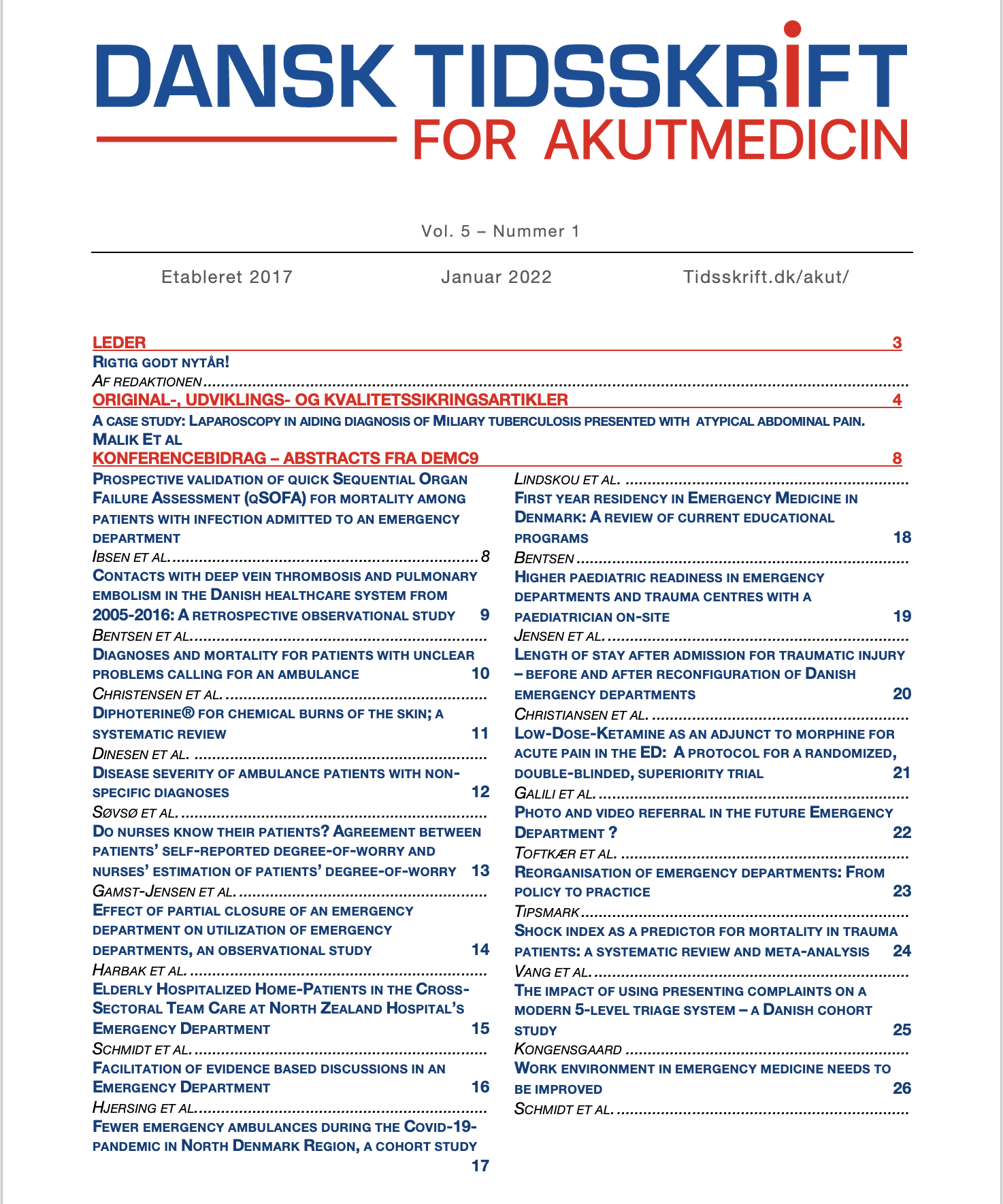Resumé
Background: Good quality of health care requires patient participation, however emergency medicine is centered around flow and production and to a lesser degree the patients’ contextual perception of acute illness. Degree-of-worry is a simple subjective measure used to enable patients to rate their worry about the condition that initiated their contact to the acute health care system on a scale from 1 (minimally worried) to 10 (maximum worried). This study examines the agreement between patients’ self-rated DOW and their nurses’ estimation of the patients’ DOW.
Methods: A total of 194 patient/nurse-pair from the emergency department at Amager Hvidovre Hospital were asked to rate their DOW (patients) and estimate their patients’ DOW (nurses). Patients’ age, gender, triage level, and co-morbidity was registered alongside the corresponding nurses’ age, gender and work experience (years). DOW was categorized as DOW1 (DOW=1-3), DOW2 (DOW=4-6) and DOW3 (DOW=7-10). The agreement between patients’ 3-level DOW and nurses’ estimation of patients’ 3-level DOW was assessed with equal weighted Cohen’s Kappa. Additional kappa values stratified on patient’s gender, age, co-morbidity and nurses’ gender, age and seniority are also estimated.
Results: The difference between patients’ 3-level DOW and nurses’ estimation was in total agreement in n=58 pairs (29.9%) of the ratings. For n=136 patient/nurse-pairs there was not agreement between scores, which corresponds to a weighted Cohen’s Kappa of 0.19 (0.30;0.08, p<0.001). Similar kappa values were found in analyses stratified for age, gender, nurse seniority.
Conclusion: The agreement between patients’ 3-level DOW and nurses’ estimation of patients’ 3-level DOW is low and suggests that nurses do not know their patients’ worries. This should be addressed in further research, as well as, clinical work.
Licenseret under en Creative Commons Kreditering 4.0 International-licens (CC BY 4.0).
© Forfatterne.

